The Geranium Should Play an Important Role
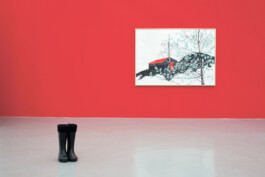
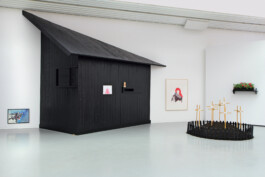
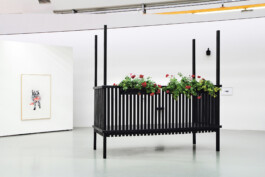


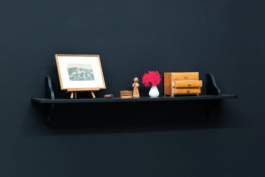
Installation view Columbus Art Foundation, on the occasion of Columbus Förderpreises für aktuelle Kunst
Installation view Columbus Art Foundation, on the occasion of Columbus Förderpreises für aktuelle Kunst
Installation view Columbus Art Foundation, on the occasion of Columbus Förderpreises für aktuelle Kunst
Installation view Columbus Art Foundation, on the occasion of Columbus Förderpreises für aktuelle Kunst
Installation view Columbus Art Foundation, on the occasion of Columbus Förderpreises für aktuelle Kunst
Installation view Columbus Art Foundation, on the occasion of Columbus Förderpreises für aktuelle Kunst
For avant-garde freaks or even just hip contemporaries, Gabriela Oberkofler’s art must be a constant provocation. Childish-looking coloured pencil drawings of animals, plants and village architecture, sculptures made from fruit crates or old wood, performances with all kinds of farm animals, wearing a dirndl and playing the accordion, acting and/or yodelling. It all seems very far removed from what characterises contemporary art. In general, the progress of art takes place in the metropolises of this world. New things are created in urban areas and certainly not in a small South Tyrolean mountain village. Contemporary art has to be political (in the best case: politically correct) and address the major issues of the current crises. This is how social relevance is created—or not. In Gabriela Oberkofler’s case, the anthills were already burning a few months before the London neighbourhoods. And although Oberkofler naturally makes her art in the metropolises (most recently performances in Berlin and New York) and has lived in Stuttgart for over a decade, she never seems to leave her home village of Jenesien.
She always moves the big themes in reference to the socio-cultural microcosm of the mountain village of her childhood. Firmly rooted memories and traditions are broken up and intertwined with the present. The whole thing oscillates between childlike naive joy and abysmal melancholy. The images that Oberkofler releases in this way break with our alienation. She herself speaks of a cycle between ‘coming home and leaving again’. As a viewer, you would be falling into a trap if you were to confuse Oberkofler's actions with a backward-looking longing in the sense of ‘back to the origins’. Instead, her obsessive work on her origins, this insistent desire to take her homeland with her into the world and into the museum, breaks with the feeling of a life that seems to be slipping away between one’s fingers. For the duration of the exhibition, the Kunsthalle Ravensburg becomes a village.
Jörg van den Berg
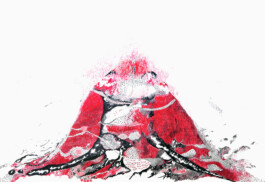
Brennender Ameisenhaufen, 2010, felt pen on paper, 180 × 240 cm, Collection Art.Plus Foundation, Donaueschingen
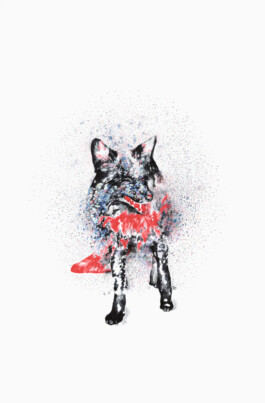
Fuchs, 2011, felt pen on paper, 180 × 130 cm, Collection Art.Plus Foundation, Donaueschingen
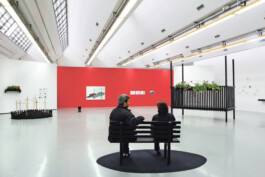

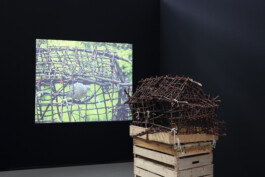
Ausstellungsansichten Columbus Art Foundation, anlässlich des Columbus Förderpreises für aktuelle Kunst
Ausstellungsansichten Columbus Art Foundation, anlässlich des Columbus Förderpreises für aktuelle Kunst
Ausstellungsansichten Columbus Art Foundation, anlässlich des Columbus Förderpreises für aktuelle Kunst
la tourterelle, 2012, Videoinstallation, 2:57 Minuten
The Geranium Should Play an Important Role






Installation view Columbus Art Foundation, on the occasion of Columbus Förderpreises für aktuelle Kunst
Installation view Columbus Art Foundation, on the occasion of Columbus Förderpreises für aktuelle Kunst
Installation view Columbus Art Foundation, on the occasion of Columbus Förderpreises für aktuelle Kunst
Installation view Columbus Art Foundation, on the occasion of Columbus Förderpreises für aktuelle Kunst
Installation view Columbus Art Foundation, on the occasion of Columbus Förderpreises für aktuelle Kunst
Installation view Columbus Art Foundation, on the occasion of Columbus Förderpreises für aktuelle Kunst
For avant-garde freaks or even just hip contemporaries, Gabriela Oberkofler’s art must be a constant provocation. Childish-looking coloured pencil drawings of animals, plants and village architecture, sculptures made from fruit crates or old wood, performances with all kinds of farm animals, wearing a dirndl and playing the accordion, acting and/or yodelling. It all seems very far removed from what characterises contemporary art. In general, the progress of art takes place in the metropolises of this world. New things are created in urban areas and certainly not in a small South Tyrolean mountain village. Contemporary art has to be political (in the best case: politically correct) and address the major issues of the current crises. This is how social relevance is created—or not. In Gabriela Oberkofler’s case, the anthills were already burning a few months before the London neighbourhoods. And although Oberkofler naturally makes her art in the metropolises (most recently performances in Berlin and New York) and has lived in Stuttgart for over a decade, she never seems to leave her home village of Jenesien.
She always moves the big themes in reference to the socio-cultural microcosm of the mountain village of her childhood. Firmly rooted memories and traditions are broken up and intertwined with the present. The whole thing oscillates between childlike naive joy and abysmal melancholy. The images that Oberkofler releases in this way break with our alienation. She herself speaks of a cycle between ‘coming home and leaving again’. As a viewer, you would be falling into a trap if you were to confuse Oberkofler's actions with a backward-looking longing in the sense of ‘back to the origins’. Instead, her obsessive work on her origins, this insistent desire to take her homeland with her into the world and into the museum, breaks with the feeling of a life that seems to be slipping away between one’s fingers. For the duration of the exhibition, the Kunsthalle Ravensburg becomes a village.
Jörg van den Berg

Brennender Ameisenhaufen, 2010, felt pen on paper, 180 × 240 cm, Collection Art.Plus Foundation, Donaueschingen

Fuchs, 2011, felt pen on paper, 180 × 130 cm, Collection Art.Plus Foundation, Donaueschingen



Ausstellungsansichten Columbus Art Foundation, anlässlich des Columbus Förderpreises für aktuelle Kunst
Ausstellungsansichten Columbus Art Foundation, anlässlich des Columbus Förderpreises für aktuelle Kunst
Ausstellungsansichten Columbus Art Foundation, anlässlich des Columbus Förderpreises für aktuelle Kunst
la tourterelle, 2012, Videoinstallation, 2:57 Minuten